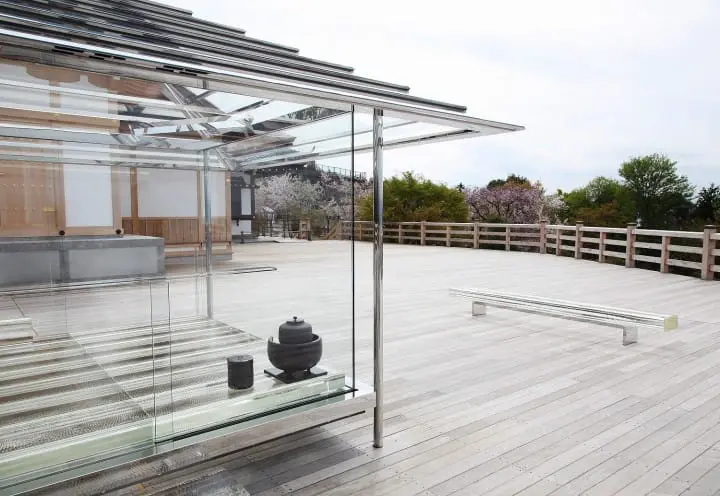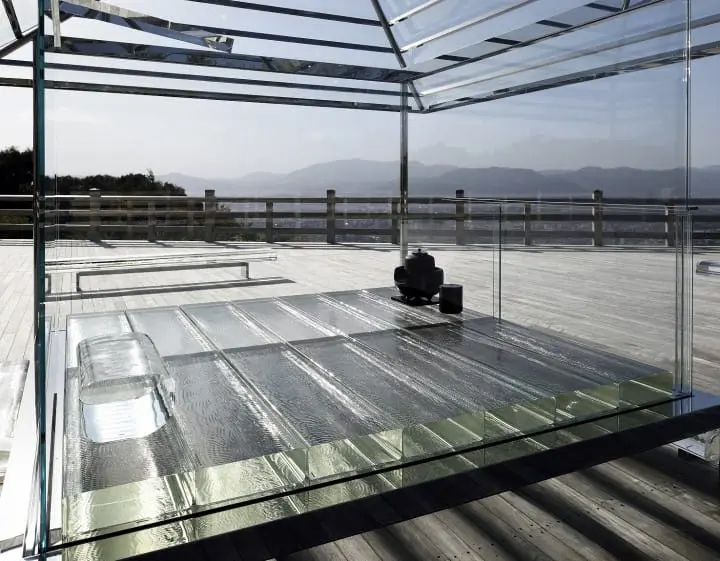The Glass Tea House – On Display In Kyoto Until September 2017

The glass tea house KOAN, designed by Tokujin Yoshioka, is on display at Kyoto's Shoren-in Temple until September 10th, 2017. Born out of a meditation on space, time and light, this exquisite work of architecture is a must-see if you visit Kyoto this summ
The glass tea house KOAN, a project by designer Tokujin Yoshioka, has been on display on the grounds of Kyoto’s Shoren-in Temple since April 2015.
The exhibition will end on September 10th, 2017. If you’d like to see this exquisite artwork with your own eyes, do visit Shoren-in this summer.
What Is the Glass Tea House?
The concept of the glass tea house KOAN (“The Shelter of Light”) has been made public for the first time at the art exhibition Glasstress 2011 during the 54th edition of the Venezia Biennale. It took almost five years for the tea house to be built according to the initial design.

In April 2015, KOAN was displayed publicly in Kyoto at Seiryuden, a hall belonging to Shoren-in Temple.
The choice of place was not aleatory. Seiryuden in located on top of a hill called Shogunzuka. It is on this hill that the history of Kyoto as the ancient capital of Japan began.
According to a legend, around the year 794, when Emperor Kanmu who was ruling the Japanese state of that time, was looking for a new location for the state’s capital, he happened to reach this hill on one of his excursions. Enchanted by the view from atop the hill, he decided to move the capital from Nagaoka to this area. This was the beginning of Kyoto as the capital of Japan.
It is said that the emperor ordered for a statue of a military general to be built and buried under this hill so that it should protect the capital from invaders and evil forces. It is for this reason that the hill bears the name Shogunzuka (“The Mound of the General”).
The glass tea house itself was conceived from an inquiry about the origins of Japanese culture. That is why there was no other place more appropriate than the Shogunzuka Hill to display this work of exquisite glass architecture.
Why Did It Have to Be a Tea Room out of Glass?

Tea ceremony is an art born out of the appreciation of nature and its cycles. In the summer, the sound of the clear water used to prepare the tea, the water patterns on the tea containers, and the fresh leaves and flowers placed in a vase in the tea room help make the heat of the season bearable.

In the winter, a small branch of plum tree placed in the tea room and the sound of boiling water make the guests’ feelings unite in the expectation of spring. A poignant awareness of the seasons permeates every gesture and every thought of those gathered in the tea room.

KOAN doesn’t have walls to hang scrolls suggesting the season on, nor does it have a space for placing freshly cut flowers. Instead, through its glass walls, the entire surrounding environment can be seen and enjoyed. The floor of the tea room is made of thick glass with a design that reminds one of flowing water, the essential ingredient and element in tea ceremony.
The glass tea room is an ambitious endeavor to remove the boundaries between the space inhabited by humans and the natural environment. It also makes possible a direct experience of “time” – of the times of the day, and of the changing seasons.
Moreover, the glass structure works as a prism for light. At a certain time of the day, when a ray of sunlight passes through the glass prism on top, the light fills the room with the colors of the rainbow. This is when the “space” of the tea room transforms into “time”.
KOAN has been born out of a meditation on the functions of space in a tea room through the perspective of contemporary design for whom time is just another dimension in which architecture can expand.
From Kyoto to the World

The glass tea house KOAN can be viewed on display on the grounds of Seiryuden only until September 10th, 2017. Afterward, it will be displayed in various places around the world.
If you visit Kyoto this summer, do make a trip to the top of Shogunzaka Hill and see KOAN with your own eyes. Seeing this very special work of architecture in the natural environment that has inspired the culture of tea ceremony and the glass room itself is an experience that you shouldn’t miss out in Kyoto, the birthplace of Japanese culture.
Address
Kyoto, Yamashina ward, Zushi okukacho 28 (Shoren-in Temple, Shogunzuka, Seiryuden Hall)
Business Time
9:00 - 17:00 (last entry at 16:30)
WiFi
Not Available
Accepted Credit Cards
Not Available
Access
Keage Station (Tozai Line)
Access
5 minutes by taxi from Keage Station; 20 minutes by taxi from Kyoto Station; 30 minutes on foot from the Gate Ruins of Shoren-in Temple (mountain path)
Website
Glass Tea House KOAN
Living in Fukuoka City, interested in travel, food, and fashion. Dream destination is Finland to see the Northern Lights.





































![[2026] Top 5 Strawberry Picking Spots in Tokushima, Naruto| Farms and Access Guide for January to May](https://resources.matcha-jp.com/resize/720x2000/2025/03/06-227165.webp)
![[Yamanashi/ Hokuto City] 4 Hot New Spots Opening in 2026](https://resources.matcha-jp.com/resize/720x2000/2025/12/12-252747.webp)


